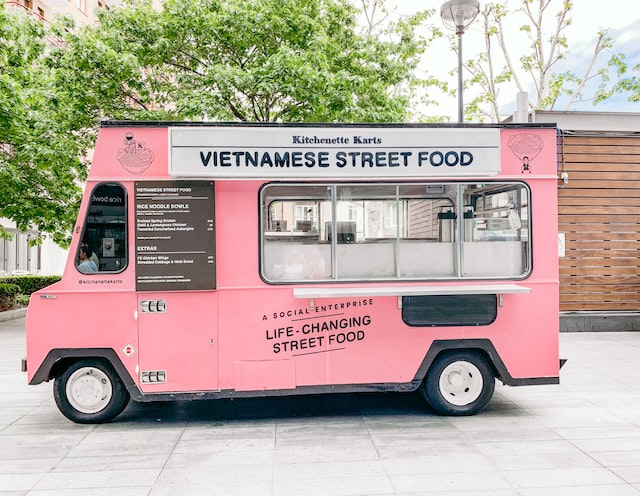
Food trucks have been around for a long time. My first memory of them is as a child. I loved the Mister Softee ice cream trucks. I swooned for a chocolate and vanilla soft-serve twist dipped in chocolate sprinkles. Growing up in New York City, there were lots of food vendors serving the constant flow of pedestrian traffic and office workers.
Food trucks have had a glow up over the past few years. Gourmet food trucks have big social media profiles and raving fans who follow them around town.
As I was visiting Maui recently, an economy that thrives on tourism, I heard about how restaurants closed during the height of the pandemic because of social distancing and restrictions on visitors to the island. I also heard about the rise of food trucks and specific locations where there were multiple food trucks and people could eat outside at picnic tables or take food home.
Customers still wanted a break from cooking, or to enjoy their favorite snack or comfort food, so the restaurant owners found a new way to bring their food to a hungry public. These food truck spots are still thriving even as tourism and restaurants are back in a big way.
I think there are some lessons small business owners can learn from food trucks.
Be adaptable
While your business plan and strong preference may have been operating out of a restaurant space, that option wasn’t available and restaurant owners needed to adapt. Maybe they did a brisk takeout business from their location, but they also could leverage their brand with a food truck, which allowed them to potentially reach a different geographic location.
Be efficient
Food trucks are small and have very limited storage space and room for cooking. Menus need to be carefully planned to have a nice selection of dishes for customers, but also need to require only select ingredients.
At the Thai Mee Up food truck here in Maui, basic vegetables and meat options were available with either noodles or curry preparations. From a customer’s perspective, the menu had a nice selection of dishes, but the food inventory required was minimal.
Be dependable
If the truck goes to multiple locations, it needs to be where the app or social media profile says it will be. People have lots of options and may not give it another chance if the truck is not in the right location on time, especially if they have traveled to meet it.
If the truck stays in one location, make sure the hours of operation are clearly posted and stick to them.
Be consistent
Meals need to look and taste the same every time. Your customers will likely come with a specific taste for something, or will want their favorite dish exactly as they remember it. A consistent and predictable customer experience will lead to people coming back for more.
While I hope we never experience anything like 2020 and 2021 again, there will always be market fluctuations and changes that small business owners need to adapt to. Business pivots are necessary in most businesses from time to time. Food trucks are a great example of how to do this well.
Photo by S O C I A L . C U T on Unsplash

